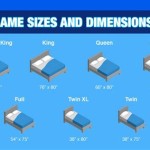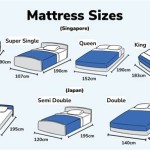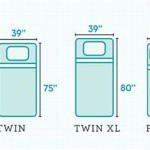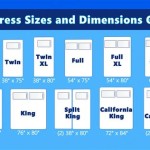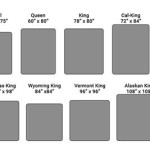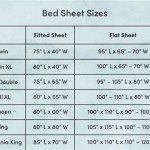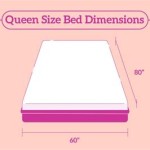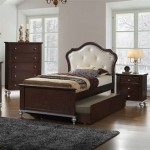Queen Size Mosquito Net for Bed: A Comprehensive Guide
A queen-size mosquito net for a bed is a protective barrier designed to prevent mosquitoes and other insects from disturbing sleep. These nets are typically constructed from fine mesh materials, providing effective protection while allowing for adequate ventilation. Choosing the right mosquito net involves considering various factors, including the type of net, its material, installation method, and overall quality.
The primary purpose of a mosquito net is to safeguard individuals from mosquito bites, which can transmit diseases such as malaria, dengue fever, Zika virus, and West Nile virus. In regions where these diseases are prevalent, mosquito nets are considered essential for public health. Beyond disease prevention, these nets also offer respite from the annoyance and discomfort of insect bites, leading to more restful and undisturbed sleep.
The size of the mosquito net is crucial for effective protection. A queen-size net is specifically designed to fit a queen-size bed, ensuring complete coverage and preventing insects from entering the sleeping area. Using an incorrectly sized net can compromise its effectiveness, leaving gaps through which mosquitoes can penetrate.
Understanding Different Types of Queen Size Mosquito Nets
Various types of queen-size mosquito nets are available, each with its own set of features and benefits. The choice of net depends on individual preferences, budget, and specific needs. Common types include:
Hanging Box Nets: These nets are suspended from the ceiling or a frame above the bed, creating a box-like enclosure. They offer ample space and freedom of movement inside the net. Hanging box nets are typically made from polyester or nylon mesh and are relatively easy to install. Some models feature multiple entry points, allowing convenient access to the bed.
Dome Nets (Circular Nets): Dome nets are characterized by their rounded shape, resembling a canopy. They are hung from a single point above the bed, creating a draped effect. Dome nets are aesthetically pleasing and can add a decorative touch to the bedroom. However, they may offer less interior space compared to box nets.
Pop-Up Nets: Pop-up nets are self-supporting and require no hanging. They are designed to be easily set up and taken down, making them ideal for travel or temporary use. Pop-up nets typically feature a frame that automatically springs open when released from their packaging. While convenient, they may be less durable than other types of nets.
Bed Canopies: Bed canopies are more elaborate and decorative than standard mosquito nets. They are often made from sheer or opaque fabrics and can be suspended from a frame or directly from the ceiling. While bed canopies offer insect protection, their primary purpose is often aesthetic enhancement.
Each type of net has specific advantages and disadvantages. Hanging box nets provide more space and are a standard choice for overall effectiveness. Dome nets are aesthetically pleasing, but may restrict space. Pop-up nets are convenient for travel. Bed canopies, while potentially providing some barrier, are generally more decorative than protective.
Materials Used in Queen Size Mosquito Nets
The material of a queen-size mosquito net significantly impacts its durability, breathability, and effectiveness. Common materials include:
Polyester: Polyester is a synthetic material known for its strength, durability, and resistance to wrinkles and shrinkage. Polyester mosquito nets are relatively affordable and easy to care for. They offer good protection against insects and are commonly used in hanging box nets and dome nets.
Nylon: Nylon is another synthetic material that is strong, lightweight, and resistant to abrasion. Nylon mosquito nets are often preferred for their durability and ability to withstand frequent use. They are commonly used in high-quality hanging box nets and pop-up nets.
Cotton: Cotton is a natural fiber that is soft, breathable, and absorbent. Cotton mosquito nets are comfortable to sleep under, but they are less durable than synthetic nets and require more care. They are also more prone to shrinkage and wrinkles. Cotton nets are less common than polyester or nylon nets due to their higher maintenance requirements.
Treated Nets: Some mosquito nets are treated with insecticides, such as permethrin, to enhance their effectiveness. Insecticide-treated nets (ITNs) kill or repel mosquitoes on contact, providing an extra layer of protection. ITNs are particularly effective in areas where malaria is prevalent. However, the insecticide treatment may need to be reapplied periodically to maintain its effectiveness. It's important to follow the manufacturer's instructions for washing and caring for ITNs to ensure the insecticide remains effective.
The choice of material hinges on prioritizing durability, breathability, ease of maintenance, and the need for insecticide treatment. Polyester and nylon provide a balance of durability and ease of care. Cotton scores high on comfort, but requires more upkeep. ITNs offer enhanced protection in high-risk areas.
Installation and Maintenance of Queen Size Mosquito Nets
Proper installation and maintenance are crucial for ensuring the effectiveness and longevity of a queen-size mosquito net.
Hanging Box Nets and Dome Nets: These nets typically require a suspension system, which may consist of hooks, ropes, or a frame. The suspension system should be securely attached to the ceiling or a sturdy support structure. Ensure the net is properly positioned to completely cover the bed, with no gaps or openings. Tuck the edges of the net under the mattress to prevent insects from entering from below. Regular checks and adjustments may be needed to maintain proper coverage.
Pop-Up Nets: Pop-up nets are self-supporting and require no hanging. Simply unfold the net and position it over the bed. Ensure the bottom edges are secured to the mattress or floor to prevent insects from entering. While pop-up nets are easy to set up, they may be more susceptible to damage and require careful handling.
Cleaning: Mosquito nets should be cleaned regularly to remove dust, debris, and dead insects. Follow the manufacturer's instructions for washing and drying the net. Most polyester and nylon nets can be machine washed on a gentle cycle with mild detergent. Avoid using bleach or harsh chemicals, as these can damage the mesh. Cotton nets may require hand washing to prevent shrinkage. Allow the net to air dry completely before reinstalling it.
Storage: When not in use, mosquito nets should be stored in a clean, dry place. Fold the net carefully and store it in a storage bag or container to protect it from dust and pests. Avoid exposing the net to direct sunlight or extreme temperatures, as these can degrade the material.
Inspecting Regularly: Regular inspection of the net is important to identify and repair any holes or tears. Small holes can be patched with needle and thread or with specialized repair kits for mosquito nets. Replace the net if it becomes severely damaged or ineffective.
Proper installation ensures complete bed coverage, and routine cleaning and storage prevent damage. Regular inspection for tears is critical for maintaining the integrity of the barrier.
Choosing the right queen-size mosquito net involves carefully considering the type of net, the material, the installation method, and the maintenance requirements. By selecting a net that meets individual needs and following proper care instructions, individuals can enjoy a safe and comfortable night's sleep, free from the annoyance and health risks associated with mosquito bites.
The density of the mesh is a crucial factor in determining the effectiveness of a mosquito net. The mesh count, measured in holes per inch (HPI), indicates the number of holes in one square inch of the net. A higher mesh count means smaller holes, providing better protection against tiny insects. Ideally, a mosquito net should have a mesh count of at least 156 HPI to effectively block mosquitoes. Some high-quality nets may have a mesh count of over 200 HPI, offering even greater protection.
Beyond mosquitoes, a quality net also restricts other insects like flies, gnats, and even some spiders that might find their way into the bedroom, making for a more comfortable sleep experience. The overall quality of the net's construction, including the stitching and seams, should also be examined. Weak seams are potential entry points for insects.
Furthermore, consider the overall dimensions of the net in relation to the queen-size bed. While the net is labeled as queen-size, there can be slight variations. It's best to measure the bed and compare it against the net's dimensions to ensure ample coverage. A net that barely covers the bed is less effective than one that provides generous draping and plenty of tuck-in material.

Mosquito Net Only Netting For Bed Dust Proof Valance Canopy Full Queen King Size

Mosquito Net For Bed Queen Size Home Bedding Lace Canopy Elegant Netting Princes

Elegant 4 Post Bed Canopy Double Layer Curtain Net Full Queen King Etsy

Costway 4 Corner Post Bed Canopy Mosquito Net Full Queen King Size Netting Black

Princess Bed Canopy Netting Mosquito Net Round Hoop Lace Dome For Queen Size Beds Green Strip Light

Octorose Daisies Canopy Mosquito Net For Crib Twin Full Queen King And Cal Size

Elegant Lace Bed Canopy Princess Mosquito Net Netting Bedding Single Queen Size

4 Corner Post Bed Canopy Mosquito Net Full Queen King Size Netting Bedding White

Elegant Mosquito Net For Bed Embroidered Lace Pleated Romantic Princess Queen Size Double Canopy Luxury Tent Mesh

Mosquito Net Size Queen Bed

